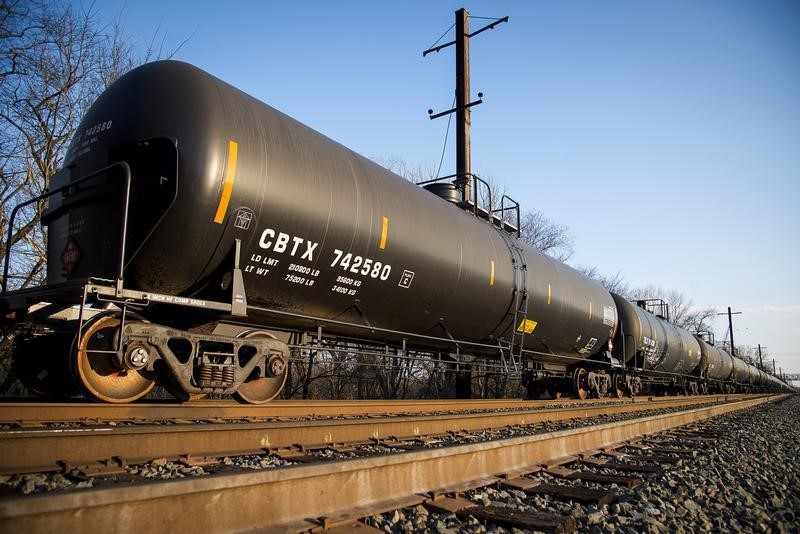Investing.com – Crude futures settled higher on Thursday, buoyed by data showing that supplies of U.S. crude fell by more than expected, easing concerns that U.S. output would continue to add to the glut in supply.
On the New York Mercantile Exchange crude futures for August delivery rose 39 cents to settle at $45.52 a barrel, while on London's Intercontinental Exchange, Brent rose 16 cents to trade at $47.95 a barrel.
Crude prices eased from highs but ultimately settled higher, after an upbeat report from the Energy Information Administration on Thursday, spurred a recovery in oil prices from a 4% drop sustained in the previous session, as both gasoline and crude stocks piles fell more than expected.
Inventories of U.S. crude fell by roughly 6.3m barrels in the week ended June 30, confounding expectations of draw of about only 2.3m barrels.
Gasoline inventories, one of the products that crude is refined into, unexpectedly fell by roughly 3.7m barrels against expectations of a rise of 1.067m barrels while distillate stockpiles fell by 1.85m barrels, compared to expectations of a rise of 217,000 barrels.
Despite the larger-than-expected draw in gasoline inventories, investor sentiment on gasoline inventories remain bearish as weak gasoline demand has pushed stockpiles above seasonal averages.
Oil prices have dipped below $50 a barrel from recent highs amid growing investor doubts about Opec and its allies’ commitment to drain the glut in supply, as members of the oil-cartel have increased exports and production, despite the current deal to curb output.
Some analysts, however, expect oil prices to rally in the second half of the year, as demand is likely to outpace supply, causing a dent in global inventories.
“My main view [the market has become too negative] is based on [a forecast] that supply growth will lag behind demand growth in the third quarter and that we should see large inventory declines,” UBS commodity analyst Giovanni Staunovo. said. “Historically we have seen a negative correlation between inventory dynamics and price dynamics.”
